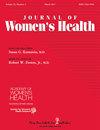Risk Prediction Model for Child Sex Trafficking Among Female Child Welfare-Involved Youth: Welfare-Involved Female Sexual Exploitation Risk Assessment Tool.
IF 3
3区 医学
Q1 MEDICINE, GENERAL & INTERNAL
引用次数: 0
Abstract
Background: Female child welfare-involved youths who are removed from the home are at risk of commercial sexual exploitation of children (CSEC). The aim of this study was to develop a prediction model to identify those at greatest risk of trafficking. Methods: Data were from the Florida Department of Children and Families' Florida Safe Families Network Database. A Cox proportional hazard regression of 60 cases and 3857 controls generated the proposed risk model. Results: Factors found to be associated with a higher risk of trafficking were quantified into point scores, generating the Welfare-Involved Female Sexual Exploitation Risk Assessment (WISER) tool with a cutoff of 20 points: first out-of-home placement at ≥15 years of age (11 points); run away from home in past year and age <15 years (40 points) or ≥15 years (16 points); English spoken as other language (14 points); on a psychotropic drug (17 points); congregate first placement (14 points); runaway/abducted status first "placement" (16 points); psychiatric facility experience (9 points); residential facility experience (7 points); and no time in temporary shelter (9 points). Of those who experienced CSEC, 92% had a WISER score above 20. Discussion: The WISER tool achieved good discrimination and calibration ability with a receiver operating characteristic for the validation data set of 0.923. The WISER tool can (1) inform risk assessment for CSEC among child welfare-involved females and (2) identify youths at greatest risk before they are harmed by trafficking.涉及儿童福利的女性青少年中儿童性贩运的风险预测模型:涉及福利的女性性剥削风险评估工具》(Welfare-Involved Female Sexual Exploitation Risk Assessment Tool)。
背景:从家中带走的涉及儿童福利的女性青少年面临着对儿童进行商业性剥削(CSEC)的风险。本研究旨在开发一个预测模型,以识别那些面临最大贩运风险的青少年。研究方法数据来自佛罗里达州儿童和家庭部的佛罗里达州安全家庭网络数据库。通过对 60 例病例和 3857 例对照进行考克斯比例危险回归,建立了建议的风险模型。结果将发现的与较高人口贩运风险相关的因素量化为点数,生成了福利牵涉女性性剥削风险评估(WISER)工具,分界点为 20 点:首次家庭外安置年龄≥15 岁(11 分);过去一年离家出走且年龄小于 15 岁(40 分)或≥15 岁(16 分);英语为其他语言(14 分);服用精神药物(17 分);首次集中安置(14 分);离家出走/被绑架身份首次 "安置"(16 分);精神病院经历(9 分);寄宿机构经历(7 分);未在临时庇护所待过(9 分)。在经历过对儿童商业性剥削的人中,92%的人的 WISER 得分超过 20 分。讨论情况:WISER 工具具有良好的辨别和校准能力,验证数据集的接收器操作特征为 0.923。WISER 工具可以:(1)为涉及儿童福利的女性中的 CSEC 风险评估提供信息;(2)在贩运行为对青少年造成伤害之前识别出风险最大的青少年。
本文章由计算机程序翻译,如有差异,请以英文原文为准。
求助全文
约1分钟内获得全文
求助全文
来源期刊

Journal of women's health
医学-妇产科学
CiteScore
6.60
自引率
5.70%
发文量
197
审稿时长
2 months
期刊介绍:
Journal of Women''s Health is the primary source of information for meeting the challenges of providing optimal health care for women throughout their lifespan. The Journal delivers cutting-edge advancements in diagnostic procedures, therapeutic protocols for the management of diseases, and innovative research in gender-based biology that impacts patient care and treatment.
Journal of Women’s Health coverage includes:
-Internal Medicine
Endocrinology-
Cardiology-
Oncology-
Obstetrics/Gynecology-
Urogynecology-
Psychiatry-
Neurology-
Nutrition-
Sex-Based Biology-
Complementary Medicine-
Sports Medicine-
Surgery-
Medical Education-
Public Policy.
 求助内容:
求助内容: 应助结果提醒方式:
应助结果提醒方式:


